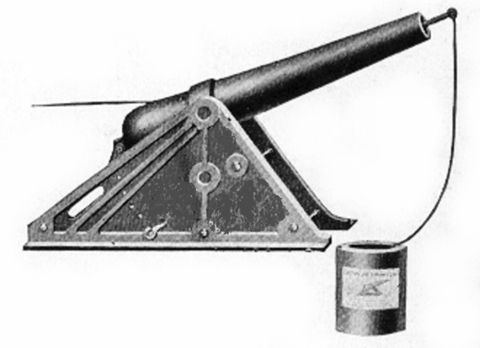HERO
CLICK HERE TO VIEW IN ORIGINAL PDF FORMAT
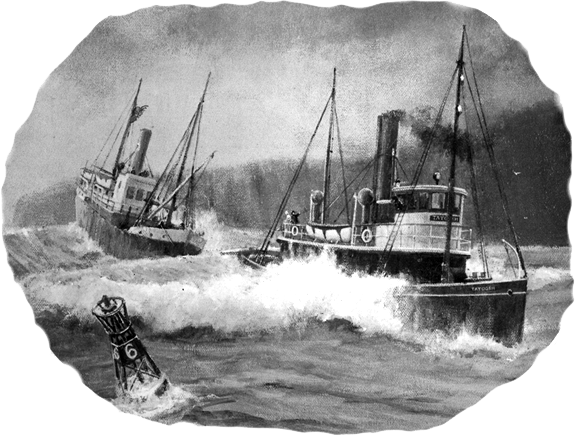
A real
“HERO”
The steam tug TATOOSH proceeded in the face of a raging gale and heavy seas off the mouth of the Columbia River as other rescue tugs were forced to return to shelter. TATOOSH continued on and entered the breaking surf, rescuing not only the forty-eight passengers and crew aboard the steam schooner WASHINGTON but the ship itself. The newspapers had already declared in their headlines that the WASHINGTON had been driven ashore and her passengers were doomed. Without the reliable power plant in TATOOSH this rescue could not have occurred.
Songs and tales abound with heroics of ships and crews who have had to endure unbelievable circumstances. Never once mentioned is the engine….and a ship without this reliable internal power would have turned most of those heroics into disasters.
Sculptured masses of iron and steel are seldom thought to have heart or soul but we, of the SS LANE VICTORY, have come to believe that HERO does possess both.
What follows is not a true history of HERO (though the tales are factual) but it is a way of saluting all the engines that have served man so reliably during the transition from sail to steam and who have no one to speak for them. And after all, it could have happened this way….
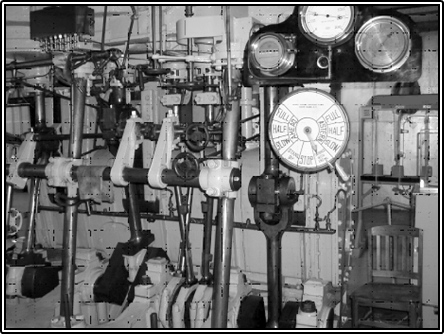
The Sand Pebbles
Engine (shown at
right) aboard the
SS Lane Victory
Docked in the Port
Of Los Angeles
We call her our “HERO” as she is being lovingly restored to perform yet another maritime feat that will add to her long list of accomplishments.
HERO is a powerful 1,100 IHP reciprocating steam engine, considered by some old time aficionados as being a small engine for little ships. But let me assure you this is not always the case. When the power-train is properly designed and installed in a suitable hull and with adequate boilers, size is secondary to efficiency.
HERO’s existence has spanned several generations of Engineers and she was installed in several different types of vessels. From a whaling trawler which was later converted to a North Sea patrol vessel to, in her twilight years, an ocean-going tug operating in the Canadian Pacific Northwest province of British Columbia.
HERO has powered her way across many oceans and always performed reliably, whether it was in the face of the enemy in two world wars or making offshore passages in violent weather.
Her beginnings are clouded by the few tattered and faded documents that have followed her long career. Several facts do stand out: she was constructed in the year 1908 at Cochrane’s and was installed into a 180-foot trawler in 1911 that was designed for rugged duty in the North Sea.
That vessel’s performance stood out beyond everyone’s expectations and in 1913-14 captured the eye of the British Navy when hostilities with Germany appeared on the horizon. For nearly four years HERO steamed on picket patrol between Orkney and the Shetland Islands, hoping to prevent the German Imperial Navy from sailing out into the Atlantic. There is no record that HERO ever failed to perform her assigned duties because of any machinery malfunctions.
After the war the trawler was returned to the fishing industry and was later sold to a Grand Banks fishing consortium in Nova Scotia. Several successful years of dragger fishing ended when the vessel was driven high on a rocky coast by gale force winds when she fouled her prop with a wire tow line and was declared a total loss.
A short time after her grounding a salvor removed the reliable steam engine and installed HERO into a large steel ocean-going tug, then under construction at Saint John, New Brunswick for a lumber company on the west coast.
The tug’s first major job was to tow a large shallow draft passenger ferry from Nova Scotia in the Atlantic to Victoria, British Columbia in the Pacific. Ballast was distributed in the ferry and the house itself was boarded up and sealed to protect it from any oncoming seas.
A 250-foot Great Lakes “Laker Class” cargo ship which had a steam up and down engine similar to HERO’s and was built for the wartime emergency service, was to escort the tug and tow as far as Jamaica. Other arrangements for escorting the rest of the trip would be made at Kingston if needed.
The passage to Jamaica was without any problems but two days after leaving Kingston the towing bridle parted at the foredeck towing bollards. The ferry drifted broadside to the seas and was rolling nearly forty degrees from side to side. It was much too dangerous to try and put a man aboard the ferry, so the tug cruised in the area of the un-tethered vessel the rest of that day and well into the next before the seas subsided enough to allow several men to jump on the ferry’s foredeck and haul a large braided towing cable aboard.
The real excitement came about when the tug was forced to make several attempts at recovering the men from the ferry after the new towline was attached, maneuvering in close quarters, in the still choppy seas trying to avoid fouling her prop with the towline or colliding with the ferry. HERO performed like the champion she was, never faltering in the heavy seas and responding to her Captain’s rapid maneuvering commands without hesitation.
In Panama repairs were made to the towing bridle and no further incidents occurred en route from Panama to San Pedro for re-fueling, but when the tug approached Cape Flattery during one the worst storms of the season, all hell broke loose.
Later, according to the tug’s log, the Master saw a schooner that appeared to be in dire need of aid. Her sails had been ripped to shreds, her foremast and bowsprit were hanging over the side. When the mast carried away it had taken much of the mainmast rigging with it, leaving the schooner out of control and wallowing on her beam ends.
The tug’s Master searched the schooner with a glass and saw several people crowded at the vessel’s stern, waving what appeared to be flags or clothing. He also noticed the wind-shredded signal flags ANC (I need immediate assistance) at the truck of the mizzenmast. He then searched the horizon for signs of any other ships in the area. There were none to be found.
Laying five miles to weather off Destruction Island and certain that the island was about to claim another unfortunate victim with crew. The Master of the tug, without hesitation, swung into a plan to rescue those people on the derelict. He noted in the log, as he was enacting the rescue, that regardless of the outcome he must be judged between the attempt to save lives or jeopardizing a valuable tow within one hundred miles of its final destination after a seventy-five hundred mile passage.
A rocket ramp for the line-throwing rocket was prepared by the crew. They stood by awaiting the Captain’s order to fire as the tug drew nearer and nearer to the disabled vessel. The rocket’s effective range was at most only 500 feet and, with gale force winds blowing in excess of 50 knots and gusting much higher, accuracy was out of the question.
The Captain raised his hand over his head as the gap between the two vessels closed…500 feet…400 feet. The Captain dropped his hand and the fuse was lit and the rocket took off, leaving a trail of flames, sparks and smoke behind. It went high enough and far enough but the wind carried the rocket and line down wind from the schooner.
Another rocket was laid in the ramp and the light line was attached. The tug was making almost no headway and the schooner was slowly drifting down on top of them. The Captain’s arm came down once again, the fuse was lit and the rocket was on its way. Bull’s-eye! Right through the mizzenmast rigging! Men were seen hauling aboard the light line followed with a heavier line, then taking aboard the four sets of grappling hooks rigged with heavy lines that were buoyed with several cork life preservers, one of which held the captain’s suggestions for their rescue attempt wrapped in oilcloth.
It was necessary for the tug to make another pass at the schooner and this time it was decided that a weather-side approach would be safer for all concerned and would allow for better control. The towing wire to the ferry was shortened to just a few boat-lengths and as HERO brought the tug and ferry around in a full circle the ferry was allowed to drift down on the schooner. All the while, a deckhand on the tug was frantically squirting storm oil on the sea to try and calm the wind-whipped breaking wave tops.
Grappling hooks from the schooner were thrown aboard the after end of the ferry; some held and others could be seen taken in and thrown again. After a short while the schooner showed signs of coming stern-to with the ferry. At that point the ferry’s house obscured the rescue operation view and all aboard the tug wondered if the rescue attempt would be successful.
A couple of men were spotted climbing atop the ferry’s house and were soon joined by several more, all waving their thanks and cheering the tug and her crew. Still uncertain if everyone had been able to abandon the derelict, the tug held its position until they saw the schooner drifting free down wind, indicating all was clear. The tug, powered by her mighty steam engine, HERO, had saved the schooner’s crew from an almost certain death.
Seaman who have rounded Cape Flattery on an ebbing tide can visualize the turmoil churned up when 60-knot gale force winds coming out of the west meet with the strong current that is draining the waters from Juan De Fuca, Strait of Georgia, Puget Sound and all her tributaries from the east. This was the situation that met the tugboat and ferry as they approached their final leg to Victoria.
All the wire was payed out and with a full head of steam our trusty engine HERO bulldogged her way up the strait. At one time the shallow-draft ferry grabbed onto a huge ocean swell and was hard-driven by the high wind blowing on her super-structure. The ferry skimmed along, gaining on the tugboat which was only making slightly more than one knot over the bottom even though she was at full power and with a bone in her teeth that made her appear to be doing ten knots as she bucked the strong ebbing tide. But HERO struggled on and brought her tug and tow safely through their final challenge.
When the steam tug reached Victoria a great reception was held to honor her and her crew for successfully completing the long distance towing effort. And when the city learned of the rescue of all hands off the ill-fated schooner near Destruction Island, the city of Victoria belonged to the tug’s crew. Unfortunately for HERO….again….she was never mentioned.
During the Second World War HERO’s tug was armed and was put into service towing barges of much needed military supplies north to Alaska.
During the severe winter months the tug was stationed in Queen Charlotte Sound, north of Vancouver Island, for service and rescue. Later, she was assigned as a tender to a large dredge that was kept busy deepening many harbors and passages. HERO chugged and puffed steadily, with hardly a hiccup or whimper; valiantly doing her part for the war effort.
After the war, new diesel powered tugs appeared everywhere in the towing industry along with a new system of propulsion controls from the bridge. The economics of needing a large government licensed engine room crew to keep steam up in her government inspected boilers around the clock spelled the doom for our heroic engine. HERO was replaced by a new and more powerful diesel engine, requiring only an Engineer and a Greaser (no fireman/water-tender) to operate the engine room.
HERO sat alone on a barren wharf, exposed to all the elements of the North Pacific weather for several years as scavengers picked her over and almost stripped her clean. Then one day a tractor trailer and huge crane arrived and hoisted HERO on the flat bed trailer for a long journey to a Southern California movie studio.
After arriving, many people clambered about HERO. She was polished, painted and lubricated. She was rejuvenated to look like her old self during her prime years.
Many hours were spent before the bright lights and cameras. Many of Hollywood’s brightest stars, including Steve McQueen, were in scenes with HERO, and for once SHE was the star. Not the Captain or his crew taking all the accolades or a beautiful ship stealing all the glorious scenes. But her, our beautiful little steam engine was the center of attraction for once in her long life. HERO was now being recognized as the heart and soul of the US Naval river patrol boat USS. SAN PABLO and renamed for the movie SAND PEBBLES.
All things do come to an end eventually. For HERO, her end was fast approaching. Stored in a warehouse and all but forgotten until she was donated, because of the high cost of storage, to a private party’s open air museum to be gawked at by hundreds of passers-by who had no idea what an important function HERO once played in Maritime history.
We know HERO’s final maritime feat will come when she is dedicated and displayed as a working steam engine from the past. Hopefully, visitors will sense that HERO really does have a heart and soul.
An organization of visionary men, the “UNITED STATES MERCHANT MARINE VETERANS OF WORLD WAR II,” have, with their optimism and dedication, restored the SS LANE VICTORY, the last remaining, fully operational World War II ship of her class out of 500 built. These VOLUNTEERS, with only donated money, mostly their own, welcomed the opportunity to take on and restore HERO to a condition that should last forever.
HERO will be prominently displayed within that famous ship, the SS LANE VICTORY (shown below) that these same dedicated VETERANS have restored to a condition that far exceeds the original designer’s imagination!
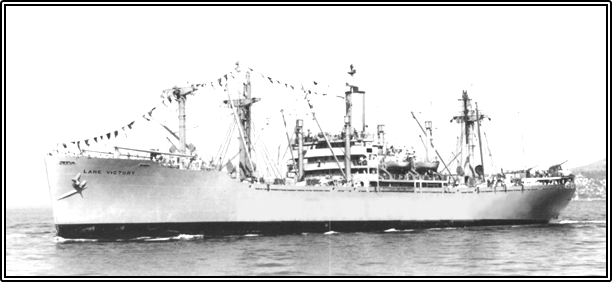
SHOULDER FIRED LINE THROWER FOR SMALL VESSELS
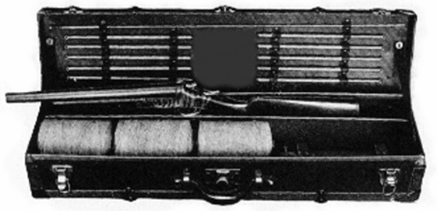
COMMONLY CALLED
LYLE GUNS
ON DISPLAY IN THE LANE VICTORY MUSEUM
MUZZEL LOADING LAUNCHER FOR LARGE SHIPS
